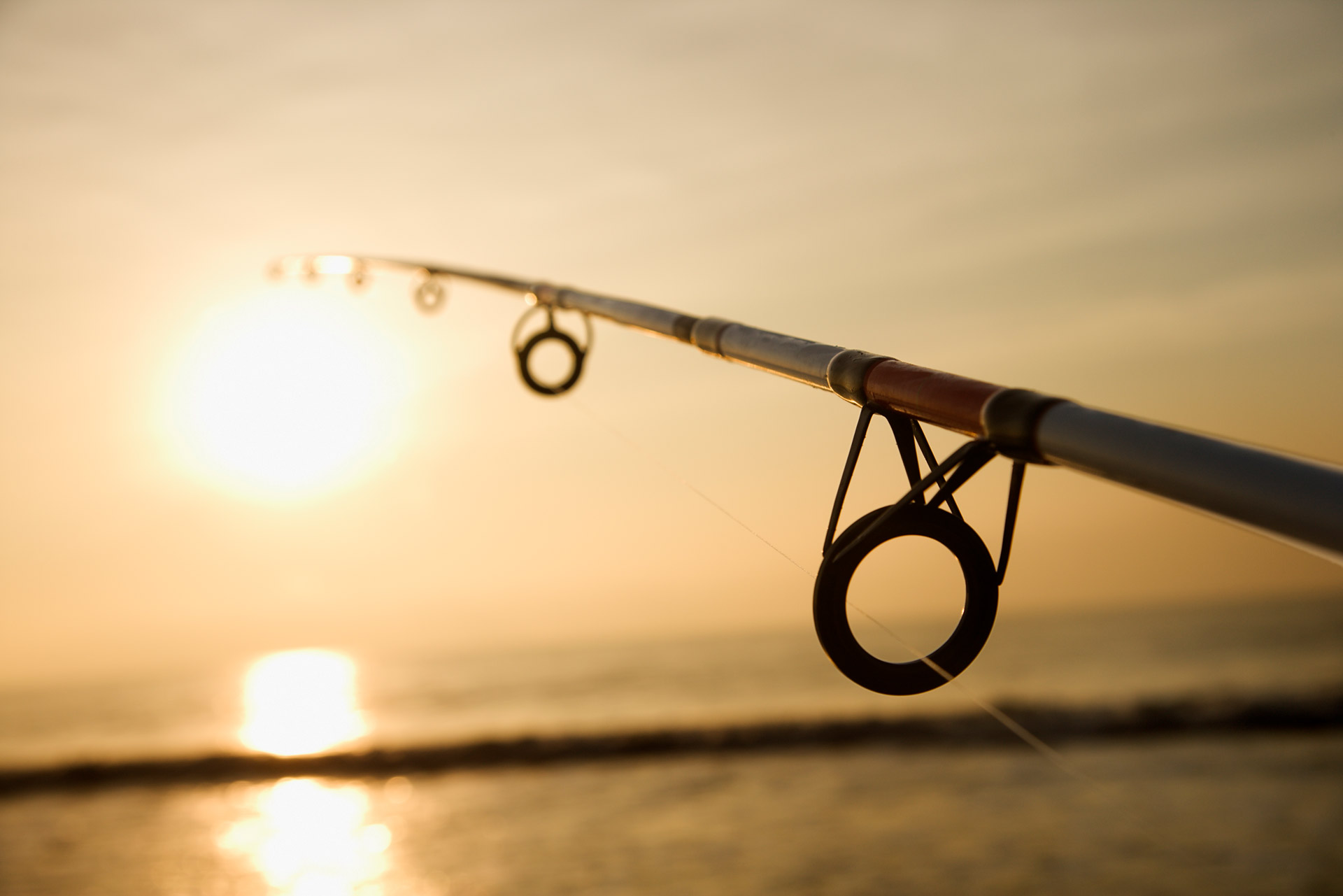Winter Kayak Fishing Tips and What to Wear
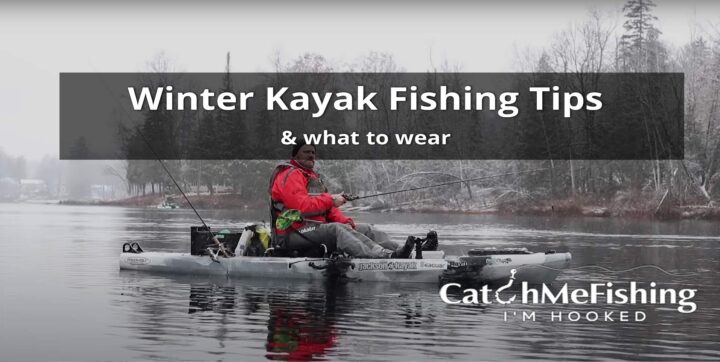
Kayak Fishing is an ideal way to loosen up the rest of your life and relax. You can also enjoy winter kayak fishing with easy adaptations on usual warm-weather prep.
It is a time of year when you can have more leisurely fishing days and fewer fishermen to compete with for your catch when out in your kayak.
With that said, taking safety precautions is imperative when going out on the water with your kayak this winter.
With snowfall, ice buildup, cold water, and air temperature, some extra considerations need to be taken before heading out to fish on the water in a kayak.
If you follow my winter kayak fishing tips, you'll be ready to hit the water even in the cold temperatures of the winter.
Plan and Prepare Before You Go
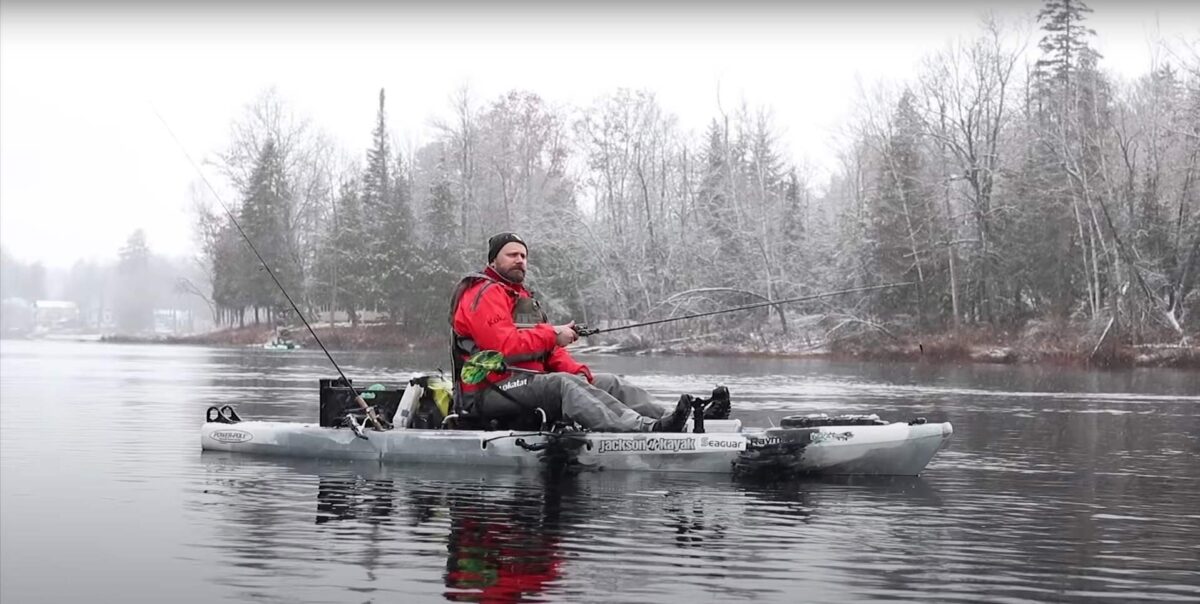
When kayak fishing in the winter, remember that weather conditions are often unpredictable.
Planning your trip will make your kayaking much more safe and more enjoyable.
- Always have an alternate plan in the case of bad weather or if your trip is unexpectedly extended.
- Prepare for rapids, strong water conditions, and obstacles before you go. Kayak fish along a route that you are familiar with to ensure you are as safe as possible.
- Use tools like the one from National Oceanic and Atmospheric Administration (NOAA). It offers detailed weather forecasts to help you safely kayak in the winter.
- Your limited fuel range can also be a factor. Always ensure your car has enough fuel to travel to and from your destination.
- Before embarking on your journey, check for nearby docks or land that will provide a safe shelter in the case of bad weather.
- Never leave your car far from where you intend to kayak so that if something goes wrong or if you get tired of paddling, you can resume your journey safely and quickly by vehicle.
Make a Float Plan
If you are venturing out on larger bodies of water, it's essential to have some extra items with you and prepare some equipment at home to ensure that you are well prepared.
A "float plan" is a good one you complete before kayak fishing. It will ensure that someone knows your location, return time frame, and what kind of watercraft you use. It's also important to have some form of distress signal if needed.
If you have difficulties while out on the cold water, this float plan will help rescuers find you.
Use this float plan HERE. Always leave your float plan with a person you can depend upon. They will give this to the coast guard/ emergency services if needed.
Cold Weather Kayak Fishing Gear
Cold-weather kayak fishing is a great way to stay active and enjoy the outdoors. However, when it's cold out, you'll need gear to keep your core warm and protect against this harsh environment!
Keeping warm is not just about how comfortable you feel. It's also about keeping safe from frostbite and hypothermia.
I use the Lifetime tamarack angler 100 fishing kayak, which has held up well on my last few winter kayak fishing trips.
I have compiled a list of items to equip yourself for those long winter days out on the water.
- Handwarmers are great for keeping your hands warm while kayak fishing in the cold winter months. They are packets of iron-oxide powder that generate heat quickly when exposed to air after being sealed in the baggie. These hand warmers can also be used around other body parts if needed.
- Fire supplies are also vital to have on hand this time of year. It's wise to bring extra lighters and waterproof matches just in case.
- Emergency shelter gear like a bivy is good to have on hand in case emergencies arrive and you become stranded somewhere. These emergency supplies will help keep you warm and shelter until help arrives.
- Extra water and food are also essential to have on hand when kayak fishing in cold temperatures. You will likely be burning more calories and drinking more liquids than usual, so it's good to bring some. Also, factor in extra in case of any emergencies.
- Extra clothing inside a waterproof sack, so you have a change of dry clothes on hand when needed. A waterproof dry bag will help keep your clothes and other supplies dry.
- A first aid kit is a must for kayak fishing, especially out on the icy waters. You never know what might happen, so having a first-aid kid will ensure you are prepared! I recommend getting one with a strap or clip to make it easier to carry.
- Signal Whistle will help if you have an accident. A signal whistle will help rescuers find you quickly. Always keep the whistle in your PDF or jacket, so you can always access it. If you fall out of your kayak and swim to shore, you will need the whistle to signal rescuers.
Winter Kayak Fishing Clothing
Extra clothing is also suitable to have on hand this time of year. You'll most likely throw on more layers than usual because it will be colder out.
You'll need extra insulation and waterproof garments if you are kayak fishing in freezing temperatures.
- A warm hat will keep your head warm. Find a hat that will cover the ears, so they don't get too cold from the wind.
- Waterproof gloves will help keep your hands warm and dry.
- Warm socks will help keep the feet extra warm. Be sure to get ones that are made for wet conditions.
- Wicking base layers help keep the body warm by wicking away sweat while keeping in the warmth. These are usually made of wool or other synthetic materials.
- Thick mid-layers will act as an insulator to help retain body heat. A jacket is perfect for this layer, but heavy sweatshirts can do the job, also.
- Wind and a waterproof outer layer is an important key to staying warm. This is the outermost layer.
- Sunglasses are important if you are out on the water in winter because of the low sun position and glare from the snow and ice. Good polarized glasses will help keep the sun out of your eyes.
- Neck Gaiter / Buff / Scarf can be worn to protect the cold winter wind from penetrating your clothes from your neck. They can also be lifted over your mouth and nose while kayaking to protect your face from the frigid air temperature.
- Drysuit (optional) Depending on the temperature, these are optional. I usually wear a dry suit over my thermal clothes to keep dry at all times in the winter. Coldwater can cause shock, and even great swimmers will find it difficult to avoid hypothermia if they fall in. I talk more about drysuits below.
- A PFD or Life Jacket is a must-have to keep your head above the water if you fall into the water. I recommend the NRD Chinook.
Use Waterproof Clothing
It's important to use waterproof clothing when kayaking in the winter months. Otherwise, you could get soaked or, even worse, hypothermia.
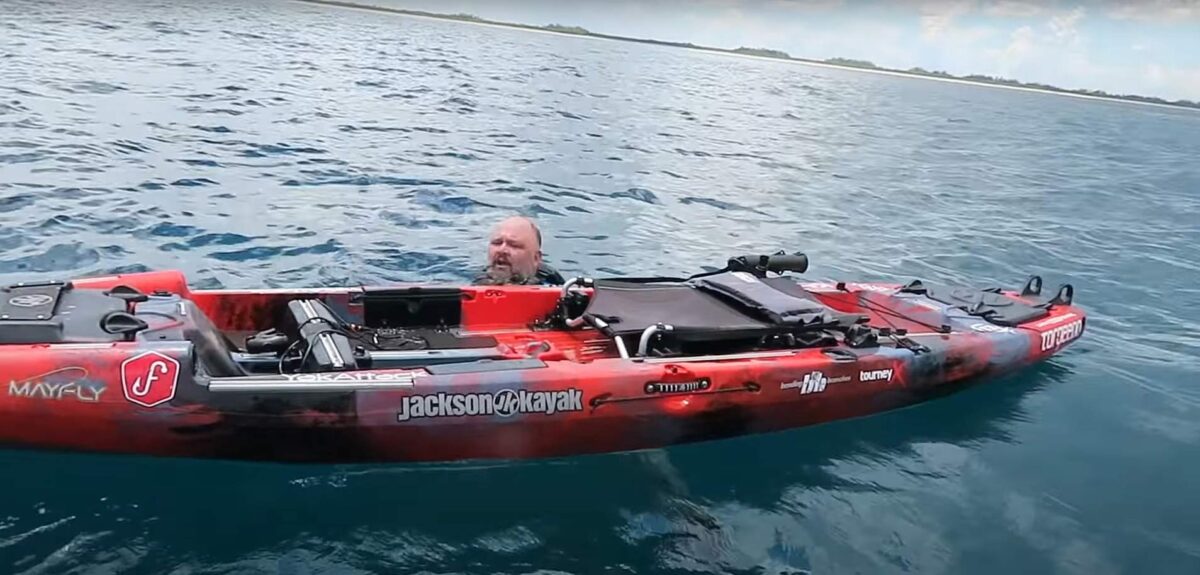
Waterproof clothing like a drysuit protects your body from getting wet. If you fell into the water without waterproof clothes, you would be at a very high risk of hypothermia if the water was cold.
Even if there is no rain or you don't fall in, water can still drip down from your paddle or the boat and soak into your clothes.
You can expect to get wet if it rains or drizzles.
Drysuits
For winter kayak fishing, drysuits are great. They keep you drier than regular clothes covering your whole body like a waterproof suit.
It does not matter if you fall into the water. As long as you have good insulation underneath, you will remain dry and warm.
The above is particularly relevant when kayak fishing during the colder months of the year when temperatures drop.
Under 50 degrees Fahrenheit, the water will be bitterly cold against the skin and soon drain your body's energy. Should you fall in, self-rescue may prove difficult.
As hypothermia starts to set in, your body will become frail, making the situation direr. You may only have a few chances to enter your kayak.
Making sure that as little water comes into contact with your skin as possible. A drysuit can help with this.
Choosing the best dry suit for you depends on your budget, the temperature you face, and how you will use it.
For colder winter temperatures, loose-fitting drysuits are the best. They allow you to add thicker, more thermally insulating clothes underneath.
Drysuits are usually made of an outer shell layer, a thermal insulating layer, and an inner waterproof membrane.
They keep you warm by trapping air between you and the suit like an insulation barrier.
My favorite dry suit is the Kokatat Men's Hydrus Swift Entry Drysuit w/Zipper
Watch Your Weight
A kayaker's weight and balance are essential, and anglers who enjoy paddling and fishing understand the importance of weight and balance.
Your clothes should be breathable and protective. When possible, invest in lightweight kayaking apparel to combine these two advantages. Finding the right balance might be tricky. The material traps heat tends to weigh a little more than its lighter, airier counterparts.
It's crucial not to overload and sinks your kayak while spooking fish away, but it's also vital to not forget anything essential.
Look for clothes with fleece and cotton. These lightweight materials can keep you comfortable while kayaking, provided they are layered correctly.
Follow the 120 Degree Rule
Even though you are free to choose where you kayak and when, there are some safety tips to consider, including following the 120-degree rule.
When the sum of the air and water temperatures is equal to or less than 120°F, you should wear a wetsuit or dry suit.
Coldwater temperatures are dangerous. Even good swimmers will get shocked if the water is too cold. Which causes the body's muscles to seize. Being unable to move will result in drowning, hypothermia, or both.
I would avoid night kayak fishing in the winter due to the lower temperatures you would face.
To lower your risk of having any of these problems, I highly recommend you wear a dry or wet suit when the 120-degree rule applies.
Practice Launching and Docking
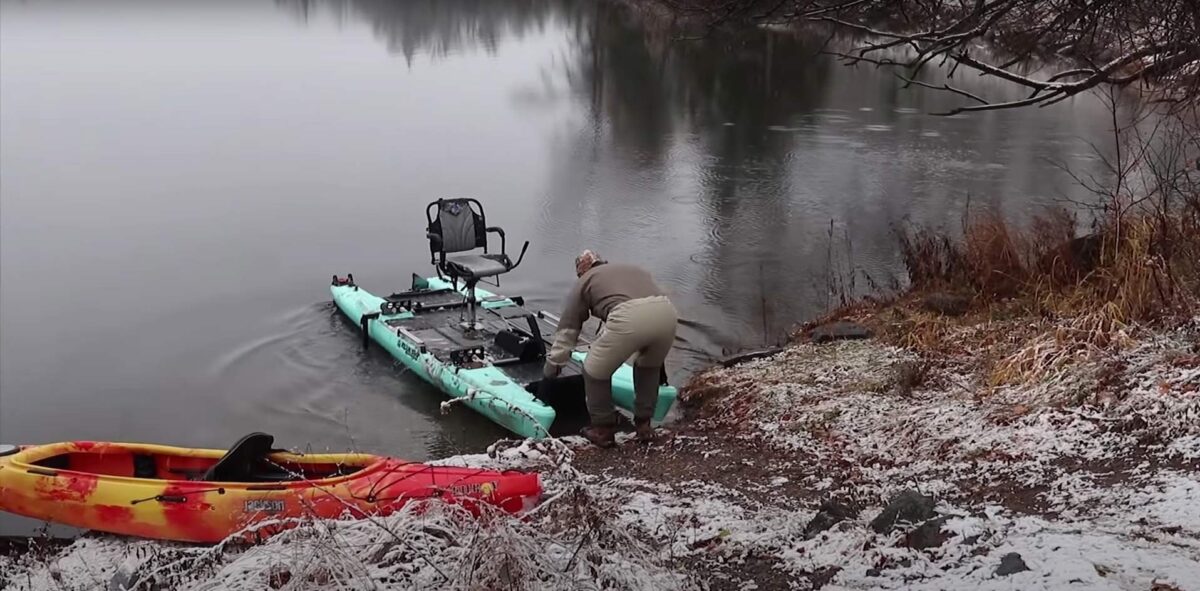
Avoid as much contact as you can with the cold water. Launching and docking, when not don't correctly, can cause us to come into contact with the water.
Practice launching and docking safely and efficiently so that when you are out on the water, you have the least exposure to the water as possible.
Getting water on your clothes will lower your body temperature. At the very worst, it will cause hyperthermia, and at the very least, it will make for a cold, miserable fishing trip.
Practice Getting Out of the Water into Your Kayak
Getting out of the water and into your kayak fast and properly is crucial if you fall in.
When you are in your kayak, you are more likely to fall out of it than flip it. Flipping the kayak typically happens when you try and get back into it after falling into the water.
Practice flipping over your kayak with a friend's assistance when the water is warm before you launch for your winter fishing trip. Only do it if you feel comfortable. Don't have anything inside the kayak that you don't want to get wet.
Practice falling out and getting back in without flipping your kayak. The practice will pay off, and you will be well-prepared for the winter.
Even when friends are helping you, it can be challenging to get back into a flipped-over kayak. Do it in an area where you can get out of the water quickly and no dangers exist.
Take Your Time
Moving fast and building up a sweat might be the correct thing, especially if you are freezing. But I don't recommend taking this approach.
Kayak in a patient, relaxed approach as rushing can scare the fish and increase the chances of making a mistake.
Dress appropriately to keep warm and avoid the need to kayak fast to keep warm.
Take Friends or Family
I would not recommend going alone when winter kayak fishing.
Kayak fishing in the winter can be a daunting experience as the possibility of an incident happening is higher than usual.
Getting trapped, lost, or stranded without help is terrible enough in typical weather, never mind the frigid weather the winter brings.
For safety and enjoyment, take your family or friends with you on your kayaking adventure so that if anything were to happen, you would have people nearby to help.
Remembering safety first will allow you to enjoy your kayak fishing trip in the winter.
FAQs
Popular FAQs that many anglers ask before they go winter kayak fishing:
What should I wear kayak fishing in winter?
Insulation: Fleece, wool, and down. Remember, if you're wearing a dry suit, it's not only the insulation quality of what you wear underneath that will make or break your survival; it's also whether or not you let water leak in and cause hypothermia.
It is my personal opinion that there is never an exception to this rule: if you're going out in any cold weather for any length of time whatsoever, then waterproof everything.
How cold is too cold to kayak?
As long as the water isn't iced over and there is no risk of damaging your kayak, then you should be ok. Plan and take all the safety precautions, and you will be ready.
Can I kayak fish in the winter?
If you want to kayak fish in the winter, then, by all means, go for it! People do, and they have a great time. Remember, there are more dangers than usual, and safety should come first. Therefore, you will need to dress appropriately and take every precaution possible.
Can you wear waders on a kayak?
No, Definitely not. I would avoid wearing waders for kayaking for safety reasons.
There would be a high drowning possibility if you went overboard with the waders on. If you are caught in fast-moving water, it would be challenging to get out of your waders, not to mention it will weigh you down under the water, which could cause you to drown.
Do you wear a bathing suit when kayaking?
No, I don't recommend wearing a bathing suit. Not only does it not protect you from the elements, but it's also for your safety. Imagine if you were to flip over in your kayak and lose something big like your paddle, or even worse, drop one of your rods overboard. With no clothes on, will put you at high risk of hypothermia.
What should you not wear while winter kayaking?
Avoid weighty clothes, waders, and anything that risks your safety.
Final Thoughts
Kayak fishing in the winter can be an enjoyable experience, but with so many hazards, it is necessary to play it safe. By preparing yourself with proper gear and clothing, you will be ready to go this winter.
Winter kayak fishing can be a new world of fun for you, your friends, and your family.
Remembering safety first is an essential part of winter kayaking, and you should always dress appropriately and take every precaution necessary.
Practicing your launching and docking procedures will give you the confidence you need to have a successful trip.
If winter kayak fishing is not for you. I have covered how to bass fish in the winter without having the need to jump aboard your kayak.
Please have a great time in cold weather fishing, and always play it safe out there! Good Luck!



